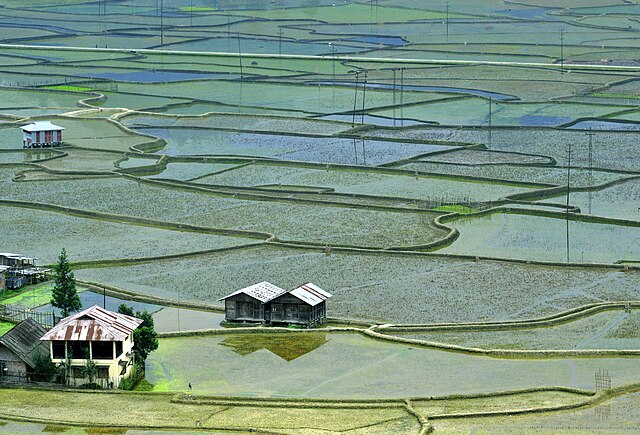A fortnight after the beginning of India’s monsoon, the metrological department reports 20% rain shortfall from June 1 but this won’t affect paddy areas in the south.
The weatherman warns that the shortfall is temporary and there is still time for the predicted above-normal monsoon rain.
There is one exception however, the south, where rain increased by 17% this season due to an early start.
Southern India is a major rice-producing zone, particularly in Andhra Pradesh, Kerala and Tamil Nadu states.
The paddy fields here rely on both the monsoon rains and the deltas of three rivers including Godavaru, Krishna and Cauvery.
Irrigation is minimal in the region as rainfall feeds both the paddy fields as well as rivers and dams.
Monsoon Culls other Rice Regions
Because 70% of all farming water in half of India comes from rainfall, below-normal precipitation can stunt thirsty paddy crops.
Consequently, India’s biggest rice-producing state of West Bengal harbors such fears after at least 20% rain shortfall since June 1, 2024.
The central India region on the other hand is lucky because rice is not a major crop here. Though, the region’s monsoon rains have decreased by 29% and the low saturation could affect pulses, soy and cotton crops.
Comparably, the northeast region where India’s monsoon has so far decreased by 20% relies heavily on rain for rice cultivation. The northeastern state of Assam in particular plants its paddy with water from Brahmaputra river, which also depends on rainfall.
Rice Prices Up
With the monsoon rains’ shortfall, rice prices have increased slightly even in the rainy southern states.
The average price at the start of the monsoon was 3,257 rupees ($39.09) a quintal in Siliguri in West Bengal. The maximum at the time on June 2, 2024 was 4,500 rupees ($53.96) a quintal.
A week later on June 10, Kerala wholesale markets were averaging 4,300 rupees ($51.56) and maximum 5,000 rupees ($59.90) a quintal. The cheapest variety was the IR-8 cultivar at 3,600 rupees ($43.16) against mataa parboiled type’s 4,600 rupees ($51.15) per quintal.
In short, as the monsoon takes a temporary break, only the southern rice region has experienced sufficient rain. As the statistics below reveal, there is nonetheless more to India’s rice scene than just the monsoon.
India Rice Statistics
Rice is India’s staple crop and it enjoys high production due to conducive governmental policies and scientific research that support farmers. India was the second biggest rice-producing nation in the 2021-22 period at 130.29 million tonnes, according to government data. This was a 13.1 million-tonne increase from the output of the 2020-21 period.
How big is India’s rice export value?
India is the world’s top rice exporter with exports worth $10.8 billion or 36.8% of global exports, in 2022. Only Thailand comes close at $4 billion or 13.5% of global exports, in 2022.
How much rice does each person eat per day in India?
A 2022 estimate puts a daily consumption of 190 g of rice per person in India, equivalent to 90 g of uncooked rice. On a yearly basis, India ranks lowly at 102 per kg per capita, in 2019. The top 15 nations led by Gambia consumed between 150 and 370 kg per person per year in 2019. Still, India ranks second after China in terms of the volume of rice consumed per year, at 108.5 million tonnes in 2022.
